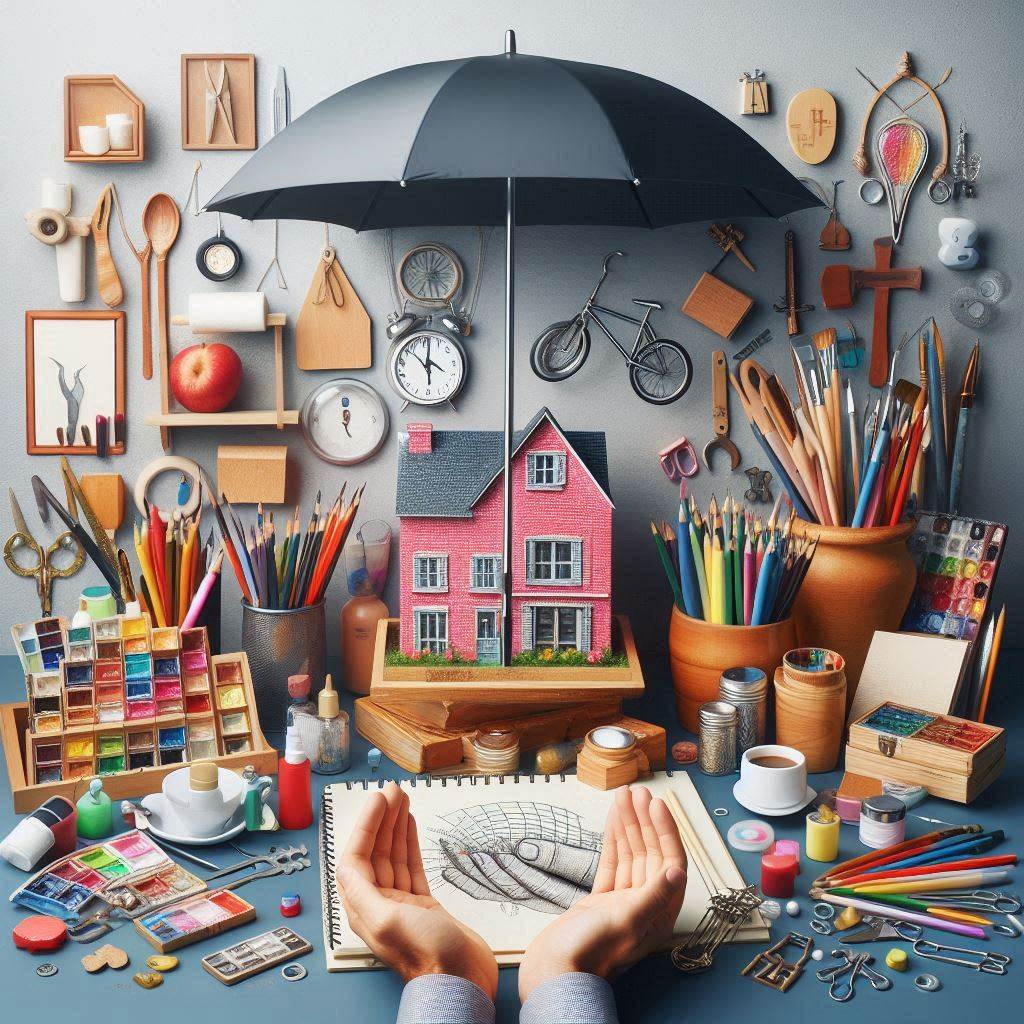Introduction
Making art is a very intimate and sometimes vulnerable process, especially if your studio is conveniently located in your house. Even while there’s no denying the ease of use and creative inspiration that come with having an art studio at home, it’s important to think about the practical aspects of safeguarding your workspace. Although it may not be the first thing that comes to mind when discussing art, insurance is essential for protecting your creations, your financial investment, and your peace of mind.
Understanding the Risks
Every creative studio, whether it’s at home or in a business, has a number of hazards. Natural catastrophes such as hurricanes, fires, and floods can seriously harm your supplies, tools, and completed artwork. Other possible risks that could impede your creative process and cause significant financial loss include theft and vandalism. Furthermore, mishaps in the studio, such spills, falls, or broken equipment, can cause personal injury in addition as damage to your work.
Types of Insurance Coverage
There are various insurance plans that can shield your home-based art studio. To make an informed choice, you must be aware of these possibilities.
Homeowners Insurance
Although home-based enterprises are partially covered by homeowners insurance, an art studio is frequently not sufficiently protected by it. Standard policies usually do not cover business-related losses and may have restrictions on the amount of coverage for company equipment. Reviewing your policy and being aware of its limitations is essential.
Business Property Insurance
This kind of insurance protects your studio’s tangible assets, such as its tools, materials, and completed works. Business property insurance can assist you with recovering the costs of lost or damaged goods in the event of a disaster, theft, or vandalism, ensuring that you can continue operating your business without suffering significant financial hardship.
Liability Insurance
Liability insurance can shield you from any legal action when accidents occur. Liability insurance pays for court costs and medical costs in the event that a client or guest is hurt in your studio or if damage is unintentionally caused by your work. If you host clients or guests at your home studio on a regular basis, this kind of insurance becomes even more crucial.
Professional Liability Insurance
Professional liability insurance, sometimes referred to as errors and omissions insurance, shields you against accusations of carelessness, error, or unfulfilled promises. Conflicts over commissioned work or claimed copyright violations are examples of this for artists. Having this coverage guarantees you won’t suffer from any financial or legal fallout from conflicts arising from your professional life.
The Financial Aspect
Investing in insurance for your home-based art studio might seem like an added expense, but it’s a wise financial decision in the long run. The cost of insurance premiums is typically much lower than the potential losses you could incur from a single unfortunate event. Consider the value of your art supplies, equipment, and finished pieces; replacing these items out of pocket can be prohibitively expensive.
Furthermore, having the right insurance coverage can provide financial stability and continuity for your art business. In the event of a disaster or loss, you can focus on rebuilding and creating new work rather than worrying about financial recovery.
Enhancing Credibility and Professionalism
Having insurance can also enhance your credibility and professionalism as an artist. Clients, galleries, and collectors are more likely to trust and engage with artists who demonstrate responsibility and preparedness. Insurance coverage shows that you take your work seriously and are committed to protecting your business and clients’ interests.
Tailoring Insurance to Your Needs
Every artist’s situation is unique, and your insurance needs may differ from those of other artists. Working with an insurance agent who understands the specific risks associated with home-based art studios can help you tailor a policy that suits your needs. Be sure to:
- Assess the Value of Your Studio: Make a detailed inventory of your art supplies, equipment, and finished pieces to understand the total value you need to insure.
- Evaluate Your Risks: Consider the specific risks you face, such as natural disasters common in your area, the frequency of visitors to your studio, and the nature of your art business.
- Review Policy Options: Compare different insurance policies and providers to find the best coverage and rates. Look for policies that offer flexibility and can be adjusted as your studio grows or your needs change.
- Stay Updated: Regularly review and update your insurance coverage to ensure it remains adequate as your art studio evolves.
Conclusion
Insurance is an essential component of protecting your home-based art studio. It safeguards your investment, ensures financial stability, and enhances your credibility as a professional artist. By understanding the risks, exploring the different types of coverage, and tailoring a policy to your needs, you can create a secure environment for your creative pursuits. Don’t wait for a disaster to strike—take proactive steps to protect your studio and focus on what you do best: creating art.


